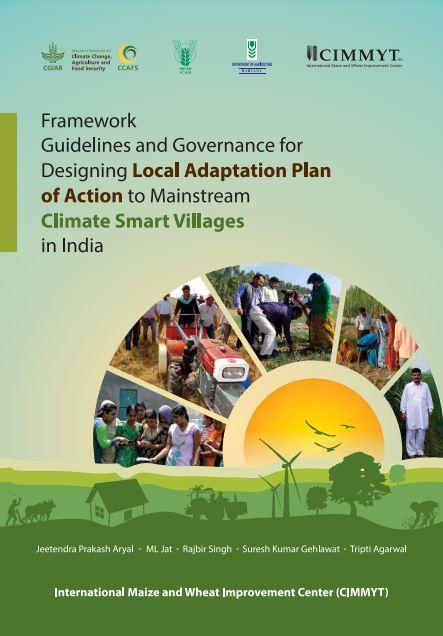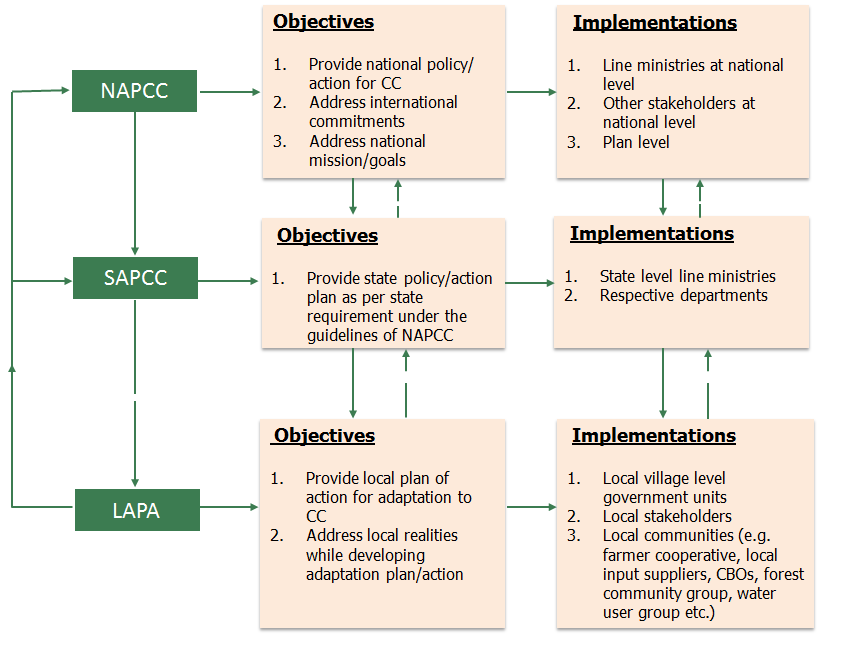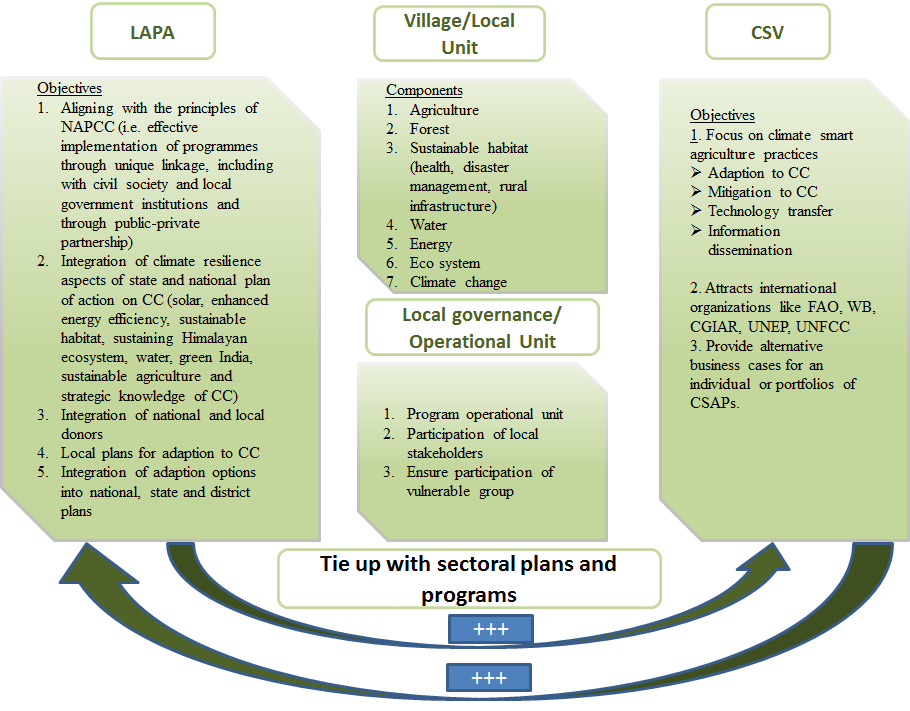Mainstreaming Climate-Smart Villages in India

New report provides detail steps including mainstreaming CSV programme in the Local Adaptation Plan of Action framework.
Researchers at the International Maize and Wheat Improvement Center (CIMMYT), New Delhi; ICAR-Agricultural Technology Application Research Institute (ATARI), Ludhiana, Punjab; and Haryana State Department of Agriculture (DOA) developed guidelines for mainstreaming the Climate-Smart Village (CSV) Programme through Local Adaptation Plan of Action (LAPA) in India. The report highlights guiding principles of LAPA and provides detailed steps including mainstreaming CSV programme in the LAPA framework.


Figure 1: NAPCC, SAPCC and need for LAPA in India
Based on the extensive review of existing frameworks and practices on climate change adaptation, this report presents BRIFFS (bottom-up, responsive, inclusive, flexible, forward-looking, and sustainable) as the major guidelines for developing LAPA. The report also presents the major steps of LAPA with clear actions, activities and tools that can be used in each step.
This report underlines the possible synergy by mainstreaming CSVs programme into LAPA. Given that CSV emphasises the adoption and up-scaling of climate smart interventions at local level, this can contribute to LAPA in selecting and prioritising location specific interventions that can help to climate change adaptation and mitigation in agriculture sector.
This framework also highlights potential mobilisation of different sources of funds into adaptation programs at local level. Authors claim that the mainstreaming CSVs into LAPA not only minimises the replication of same programs in the same locality by different organisations but also enhances sustainability of the program through better targeting and convergence at local level. They illustrate a linkage between LAPA and CSV in Figure 2:

Figure 2: Synergy and governance of CSVs and LAPA at Local level
Download the report: Framework Guidlines and Governance for Designing Local Adaptation Plan of Action to Mainstream Climate Smart Villages in India
Jeetendra P Aryal is an Agricultural Economist at CIMMYT.
Arun K Chhetri is Science Officer at CCAFS South Asia.



